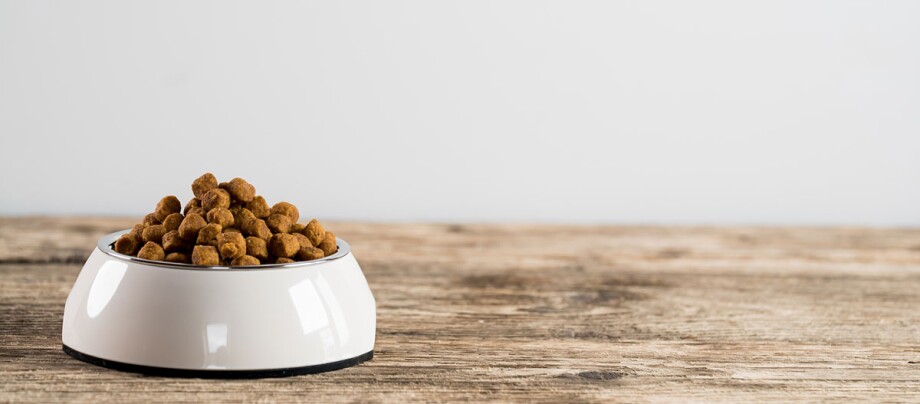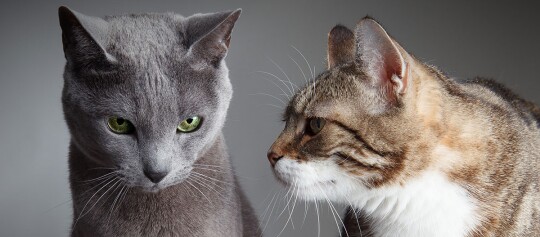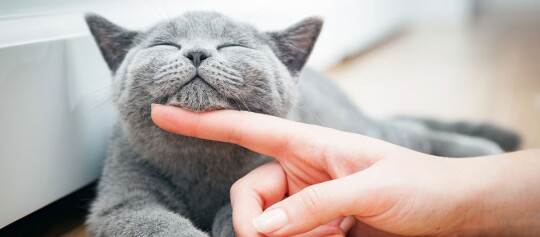Nutrition counselling for cats: Dry food and wet food
13.02.2023 - Reading time: 4 minutes

Does your kitty come running at the seductive rattle of the food carton or at the magical sound of the tin opener? The sound isn’t just music to your cat’s ears, it also means it’s time to eat. Amongst all the various flavours that the cat food market has to offer, the first differentiation has to be made between dry and wet food. Both have their own advantages. Learn here how you can ensure that your cat enjoys a well-balanced diet.
What is meant by wet food and dry food?
Cat food must contain a well-balanced ratio of proteins, animal fats and constituents such as phosphorus, calcium, magnesium, arginine, essential fatty acids, vitamin A, niacin and taurine. A good cat food offers a perfectly balanced mix of all nutritional elements and guarantees meals that are low in carbohydrates and high in protein.
Wet and dry cat food - a comparison:
-
• Wet food is offered in the form of soft chunks preserved in tins, pouches or trays. Jellies, pâtés and the like also belong to the wet food category.
• Dry food is dehydrated, pressed cat food in croquette, or cushion form and other small snack pieces.
The higher the quality of the cat food, the greater the nutrient concentration. Your cat therefore needs less. This quickly makes paying the somewhat higher price worthwhile.
What comprises a good mixed feed?
The principle behind mixed feed is that you can offer your cat both wet and dry food. This works by giving the cat the wet and dry food in different bowls at different specific times during the day. For example, you should split the total daily amount of food – for a healthy, adult cat – as follows: Wet food should be given in two rations, e.g. at breakfast and in the evening. The portion of dry food should be readily accessible to the cat the whole day through. Eating lots of small meals throughout the day corresponds to the cat’s natural feeding pattern and this can be well met by offering dry cat food in this way. Moreover, dry and wet cat foods have different digestion times, meaning that the cat’s stomach is then working at an equal pace the whole day through.
It is important that the cat accepts both forms of food. This has the advantage that the cat then does not develop as many idiosyncrasies that could make it picky in the case of it being necessary to only offer the cat one type for food for medical or other reasons.
When feeding your cat, you should pay strict attention to a well-balanced ratio of nutrients and constituents in its daily feed ration. Calculating this when feeding mixed feed with dry, wet and maybe even fresh food with the odd treat thrown in here and there can be somewhat complicated, especially when the manufacturer’s packaging does not contain specific explanatory information. In such cases, specialised shop assistants at the retail outlet or your vet will be able help, and there is also plenty of literature available on this topic.
If you acquire a cat that has only been used to being fed solely wet or dry food in its previous home, you can help it get used to the other type of food by mixing it in a bit at a time with the type of food it is used to. Do this for so long until the cat happily accepts both types of food.
How many treats are allowed?
The choice of cat snacks and treats is almost just as varied: From filled cushion treats to cat sausage to dried fish, there’s something for every feline gourmet. With so many different possibilities available there is absolutely no reason to feed your cat with titbits from your table: Then the minute your cat realises it has been successful in begging from your table, your plate is no longer taboo. Cat treats should be treated the same way as sweets: Too much is just not healthy. It is a good idea to plan a treat ration into your cat’s daily feeding plan and use the cheese snacks etc. to reward your cat or just give it a treat. The most ideal situation is to give your cat a treat as an incentive for physical activity, e.g. as a reward in a chasing game or inside a snack-ball toy. This way the cat uses the snack’s energy content for movement and works the calories off.
What is better - wet or dry cat food?
If you’ve been wondering what is better – wet or dry cat food, the answer is: neither. Both are possible. Used together, they compensate each other’s respective weaknesses and double their advantages.

